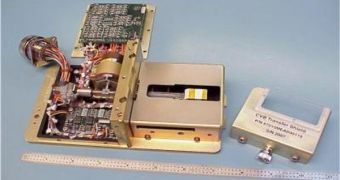Among the scientific experiments that will be taken to the International Space Station (ISS) aboard the space shuttle Discovery, there is one that was designed by experts at the Rensselaer Polytechnic Institute (RPI). The experimental heat-transfer system will be installed aboard the station for a total of three years, after which time it will be brought back on Earth, for analysis. The project is called the Constrained Vapor Bubble (CVB).
The new instrument could provide a better understanding of processes involving the nature of heat and mass-transfer operations, such as evaporation, condensation, and boiling. The reason why it will be different from other similar experiments is the fact that it will take place outside the Earth's atmosphere, in microgravity, and under precisely controlled lab conditions, its creators say. Results collected with the CVB could also lead to the development of new cooling systems for spacecraft and other orbital structures in the future.
“After years of hard work to advance this project to its current state, I am very excited to see our Constrained Vapor Bubble make its way into space and onto the International Space Station,” 1956 Rensselaer graduate and Professor Emeritus in the RPI Department of Chemical and Biological Engineering, Peter Wayner, says. He is also one of the science investigators for the project. The study is conducted in cooperation with experts from the NASA Glenn Research Center.
“The CVB experiment will provide a wealth of scientific and engineering data critical to the development of advanced materials, advanced devices, and reliable temperature and environmental control systems for extraterrestrial manned stations or interplanetary exploration missions,” the other project investigator, RPI Department of Chemical and Biological Engineering Professor Joel Plawsky, adds.
With data that will be collected from the new system, engineers back on Earth could devise more efficient heat pipes, to be used, for example, in cooling computer processors. Similar heat pipes could also find serious applications in medicine, especially for implantation in patients suffering from epilepsy. Last but not least, CVB may offer the way towards designing highly effective molecular self-assembly processes.

 14 DAY TRIAL //
14 DAY TRIAL //